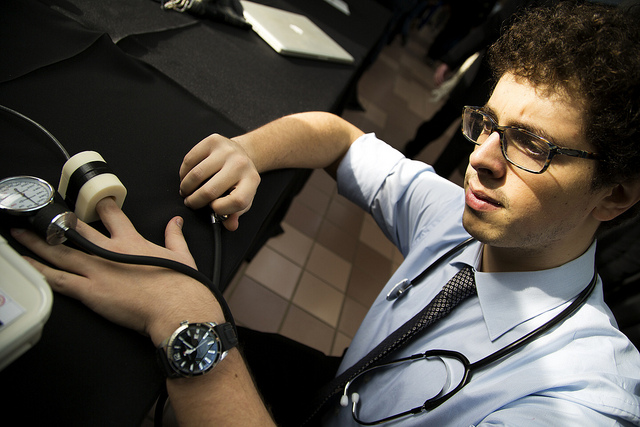Description
Clinicians measure fetal heart rate to assess the health of a fetus non-invasively during pregnancy and labor. A baseline fetal heart rate should be between 110 and 160 beats per minute and should include moment-to-moment variations from the baseline to indicate fetal activity. Baselines above the normal range can indicate fetal distress due to infection, anemia, or hypoxia. Bradycardia lasting longer than two minutes indicates severe fetal distress and necessitates immediate action by an obstetrician. In modernized hospitals, constant electronic monitoring of the fetal heart rate has made auscultation obsolete. Resource-limited hospitals in sub-Saharan Africa monitor fetal heart rates primarily using a Pinard stethoscope, which may result in inaccurate determination of the heart rate and unnecessary referrals in cases when the heart rate cannot be heard. The Pinard stethoscope is limited by its inability to record the fetal heart rate, difficulty of use when the fetal position is unclear, difficulty of use in the presence of background noise, and discomfort of use for the clinicians. The goal of this project is to design a method for health care workers in resource-limited settings to determine the baseline fetal heart rate and its variations regardless of fetal position in the womb so fetal distress and cardiovascular abnormalities can be quickly and reliably identified.
I have seen the people that my device will affect, and have met with the practitioners that will ultimately use it. The tangibility of that encounter makes me want to be a more accountable and ethical engineer.
What to Know About The Global Health Design Initiative

Program History
GHDI has been working with stakeholders for more than eight years to identify and address global health design challenges. Learn more about our history and core values.
Learn More →
Project Outcomes
Since inception, we have worked on projects in maternal health, family planning, minimally invasive surgery, physical medicine and rehabilitation, and more. Explore our past and current projects.
Learn More →
Get Involved
There are many ways to get involved in global health work with GHDI. From taking on a need statement, to participating in an opportunity, or becoming a partner.
Learn More →
